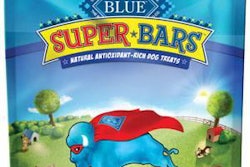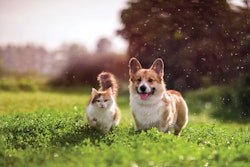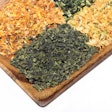
As reported in Packaged Facts, “Pet Food in the U.S.,” the top dry dog food marketers are Nestlé Purina (drawing 29% of purchasers) and Mars (at 19%). Three marketers form a second tier, by this customer base metric: Post, with its purchase of most of JM Smucker’s pet food brands (10%); General Mills, with Blue Buffalo (10%); and Colgate-Palmolive, with Hill’s Science Diet (8%).
All these top-tier dry dog food marketers are giants in the larger consumer packaged goods (CPG) industry, and all but Colgate-Palmolive are general food market kingpins, underscoring that — with pets as family — pet food products are core family shopping products.
Brand performance among kibble top dogs
The brand line performance of these leading markets also makes a perhaps more surprising point. Notwithstanding inroads by newer marketers with more novel offerings — fresh refrigerated/frozen pet foods especially, but also freeze dried/air dried formulations, and those featuring plant or insect protein — the bigs among dog kibble brands mostly keep getting bigger.
MRI-Simmons survey data show the top dry dog food brand lines by usage rates in 2023 as Purina One, Blue Buffalo, Pedigree (excluding Pedigree Puppy) and Hill’s Science Diet (see Table 1). Over the 2013–2023 period, four of these five brands have posted impressive gains in usage rates, despite the highly diversified and fractured nature of the category. In rounded numbers:
- Purina ONE increased in usage rate among dog kibble purchasers from 5% in 2013 to nearly 10% in 2023, with much of that growth coming in the post-COVID era.
- Blue Buffalo increased in usage rate from 4% in 2013 to nearly 9% in 2023, with most of that growth coming in the earlier part of this tracking period.
- Hill’s Science Diet increased in usage rate from under 6% in 2013 to 8% in 2023, with the growth coming in the post-COVID era.
- Purina Pro Plan quadrupled in usage rate from 2% in 2013 to 8% in 2023, with most of that growth coming in the post-COVID era.

TABLE 1: A fair chunk of growth among the top dog kibble brands has happened post-COVID.
The exception to the growth pattern among the top five is Mars’ Pedigree, which dropped in usage rate from 12% in 2013 to 8% in 2023, with fluctuations along the way.
A broader look at kibble growth trends
Over this period, for wider perspective, the share of dog kibble purchasers choosing store brand products remained fairly stable (about one-tenth of purchasers), as did the share choosing smaller-scale “other” brands (about two-tenths of purchasers) that fall outside of the 24 brand lines tracked by the MRI-Simmons data.
It’s not just a coincidence that Pedigree, as the only brand of this top five set not to post growth, is the only mid-market, mid-priced brand among these market leaders. Amazon lists an 18-lb. bag of Pedigree Adult dry dog food at about US$17. By comparison, among the other top five brands, prices range from a relative low of US$32 for a 15-lb. bag of Purina One to a high of US$56 for a 15.5-lb. bag of Hill’s Science Diet.
Explaining this trend, of course, is the long-term premiumization and super-premiumization trend in pet food, recently spurred by the ramping up of family/pet health concerns associated with COVID-19.
Much of the real dollar historical growth in the pet food market can be attributed, and much of the near-term growth will be attributable, to continued premiumization and moving the consumer to higher-end products. This holds especially true given that dog population growth has flattened, while inflation-fueled nominal dollar growth has finally begun to abate.
And as pet food purveyors continue to surf the premiumization wave, they are increasingly turning their attention to a more robust sustainability positioning, including the use of alternative proteins.


















